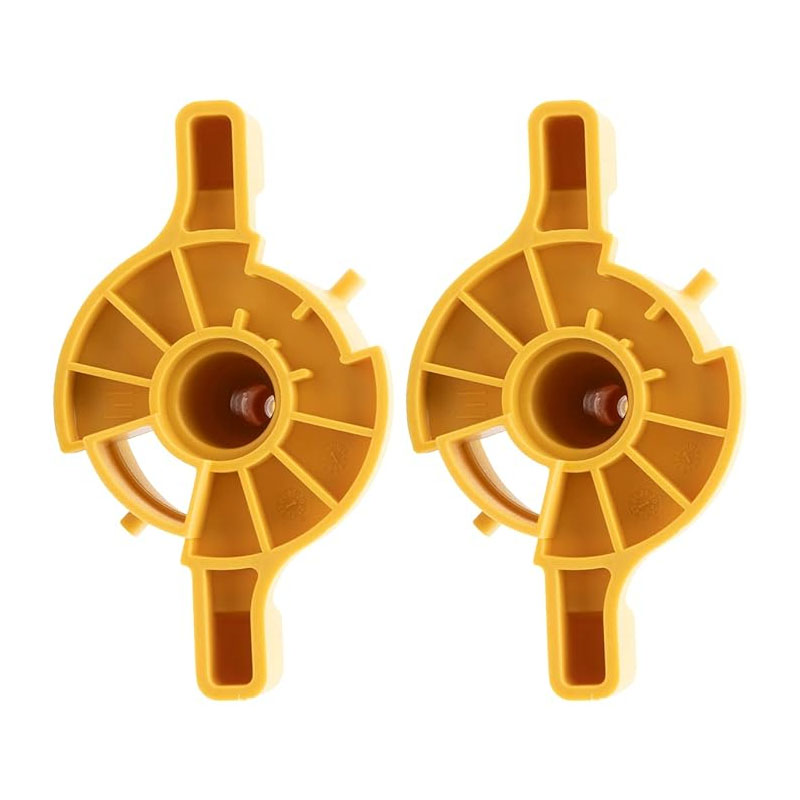Upper and Lower Oil Pan Gasket Replacement and Maintenance Guide
Understanding Upper and Lower Oil Pan Gaskets
The oil pan gasket is a critical component of any internal combustion engine, playing an essential role in maintaining the engine's performance and longevity. Understanding the functions and significance of both the upper and lower oil pan gaskets can help vehicle owners and enthusiasts alike appreciate their importance in engine management.
What is an Oil Pan?
The oil pan, often called the sump, is a reservoir located at the bottom of the engine that holds the engine oil. This oil is vital for lubricating the engine’s moving parts, reducing friction, and helping to dissipate heat generated during combustion. The oil pan also serves as a collection point for oil when the engine is not running, allowing it to be recirculated when the engine is started again.
Types of Oil Pan Gaskets
There are typically two primary gaskets associated with an oil pan the upper and lower oil pan gaskets.
1. Upper Oil Pan Gasket This gasket usually sits between the upper oil pan, which may be part of the engine block, and the engine itself. Its function is to seal the joint properly to prevent oil leaks. In some designs, the upper oil pan may also include compartments for oil circulation, meaning that a leak here can lead to insufficient oil flow to the engine.
2. Lower Oil Pan Gasket The lower oil pan gasket is positioned between the lower oil pan and the upper oil pan (or directly on the engine block, depending on the design). This gasket bears the same responsibility to provide a tight seal that prevents oil leaks and ensures that the oil remains contained within the pan. A compromised lower oil pan gasket can result in significant oil loss, leading to engine damage if not addressed promptly.
Importance of Gaskets
upper and lower oil pan gasket

The integrity of both the upper and lower oil pan gaskets is paramount. Oil leaks can lead to several problems, including
- Reduced Oil Levels Losing oil not only means that your engine may not be adequately lubricated, but it can also result in overheating, wear, and potentially catastrophic engine failure. - Sludge Buildup Oil leaks may also lead to contaminants entering the oil system, causing sludge buildup. Sludge can obstruct oil passages, further compromising oil circulation and leading to engine overheating. - Environmental Concerns Oil leaks can also pose environmental risks, as they can lead to contamination of the soil and water.
Signs of Oil Pan Gasket Failure
Recognizing the signs of a failing oil pan gasket is important for any vehicle owner. Common symptoms include
- Oil Spots Puddles of oil under the vehicle may indicate a leak. - Low Oil Levels Frequent checks may show that oil levels are dropping faster than usual. - Engine Warning Lights Some vehicles may trigger a warning light if the oil pressure drops due to leaks.
Maintenance and Replacement
Regular maintenance is essential to ensure the long-term health of the engine. It is important to check oil levels regularly and keep an eye out for any signs of leaks. If a gasket is suspected to be failing, it is advised to have it inspected and replaced by a professional mechanic.
In conclusion, upper and lower oil pan gaskets may not be the most glamorous components of an engine, but their significance cannot be overstated. By understanding their roles and actively maintaining them, vehicle owners can help ensure optimal engine performance and longevity.
-
Understanding the Front Main Engine Seal: Purpose, Maintenance, and Installation
News Jul.29,2025
-
Understanding O-Rings and Seal Rings: Types, Applications, and Custom Solutions
News Jul.29,2025
-
Understanding Crankshaft Oil Seals: Rear Seals, Pulley Seals, and Their Role in Engine Integrity
News Jul.29,2025
-
The Importance of Front and Rear Crankshaft Seals in Engine Performance and Oil Management
News Jul.29,2025
-
Crank Oil Seals: Functions, Types, and Cost Considerations in Engine Maintenance
News Jul.29,2025
-
A Comprehensive Guide to O-Rings and Seals: Types, Materials, and Global Applications
News Jul.29,2025
-
Mastering Diesel and Performance Engine Maintenance: A Guide to Critical Oil Gaskets
News Jul.28,2025
Products categories















